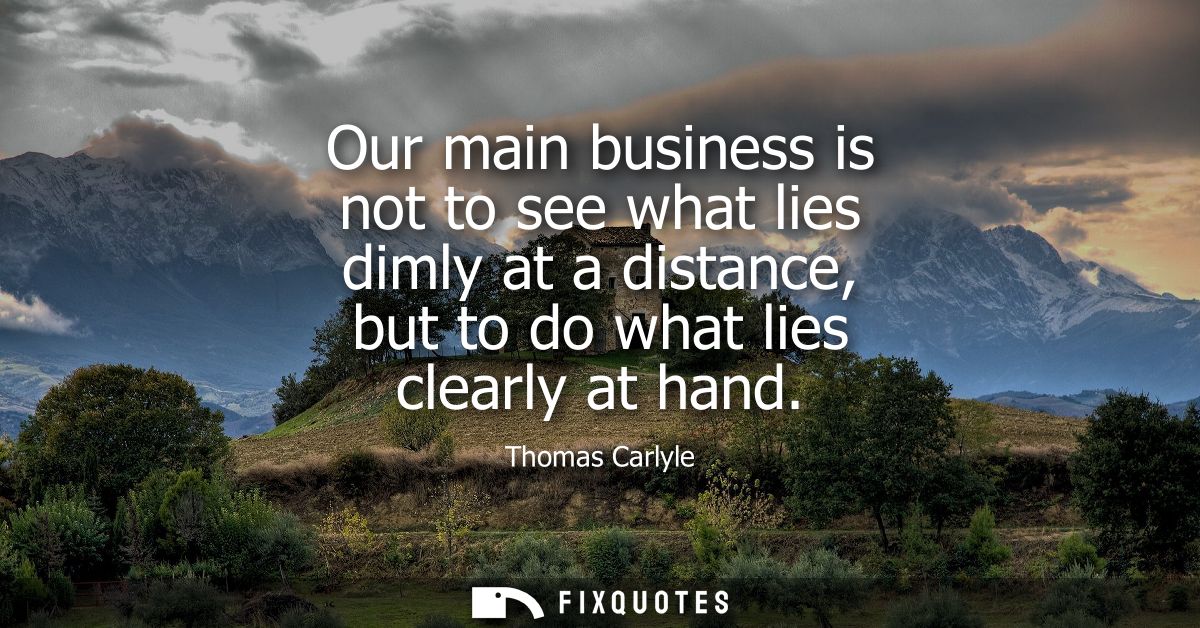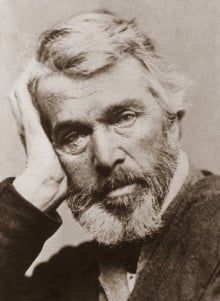"Our main business is not to see what lies dimly at a distance, but to do what lies clearly at hand"
About this Quote
Thomas Carlyle emphasizes the importance of focusing on immediate responsibilities and tangible tasks rather than becoming fixated on distant, uncertain goals or outcomes. Often, people are drawn to envisioning future possibilities, the grand ambitions or far-off objectives that remain hazy and undefined. While dreaming and planning have their place, they can sometimes distract from what is present and actionable. By channeling effort into tasks that are right in front of us, noticeable and within our power to influence, progress becomes attainable and real.
The pull of the distant often appeals to our imagination and desire for something larger than ourselves. However, dwelling too much on what lies far ahead can lead to inaction. The future, by its nature, is uncertain, its outlines are dim and susceptible to misinterpretation or wishful thinking. Rather than letting ourselves become paralyzed by the ambiguity of distant possibilities, it becomes more productive to engage with what is concrete and accessible.
Attending to the immediate doesn’t mean dismissing ambition or foresight, it simply grounds aspirations in meaningful action. Success and personal fulfillment are rarely found by waiting for perfect clarity about the future. Instead, they are built moment by moment, task by task, as individuals devote attention and care to the duties and opportunities directly in their path. This approach fosters responsibility, reliability, and a kind of practical wisdom. When people address their present obligations with seriousness and resolve, they inadvertently shape their future, often achieving more than if they had only contemplated distant aims.
Carlyle’s insight encourages a shift away from endless speculation or preoccupation with what might be, urging instead a disciplined engagement with reality. By succeeding in what lies clearly at hand, greater goals often come closer into view naturally and sustainably. Action in the present bridges the gap to the future.
More details
| Source | Thomas Carlyle, Past and Present (1843). |
| Tags | Business |
About the Author

